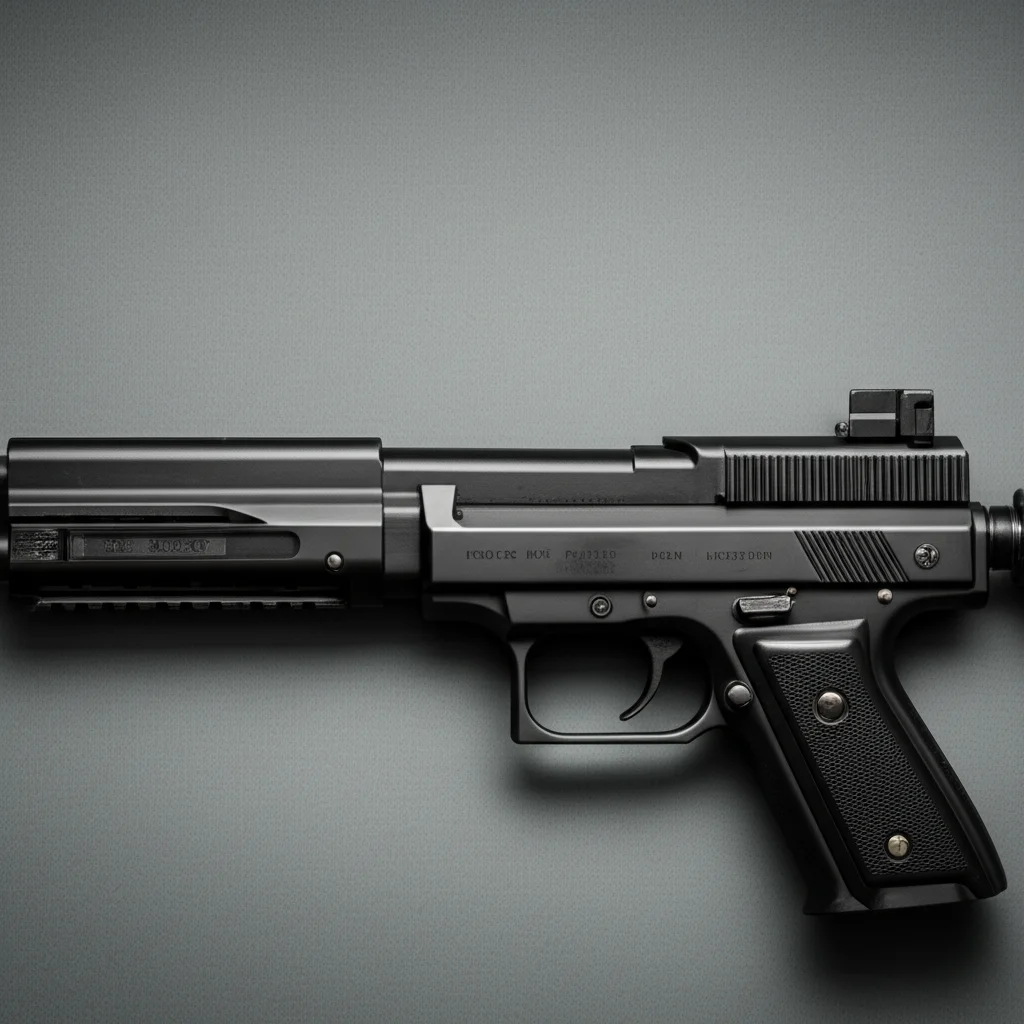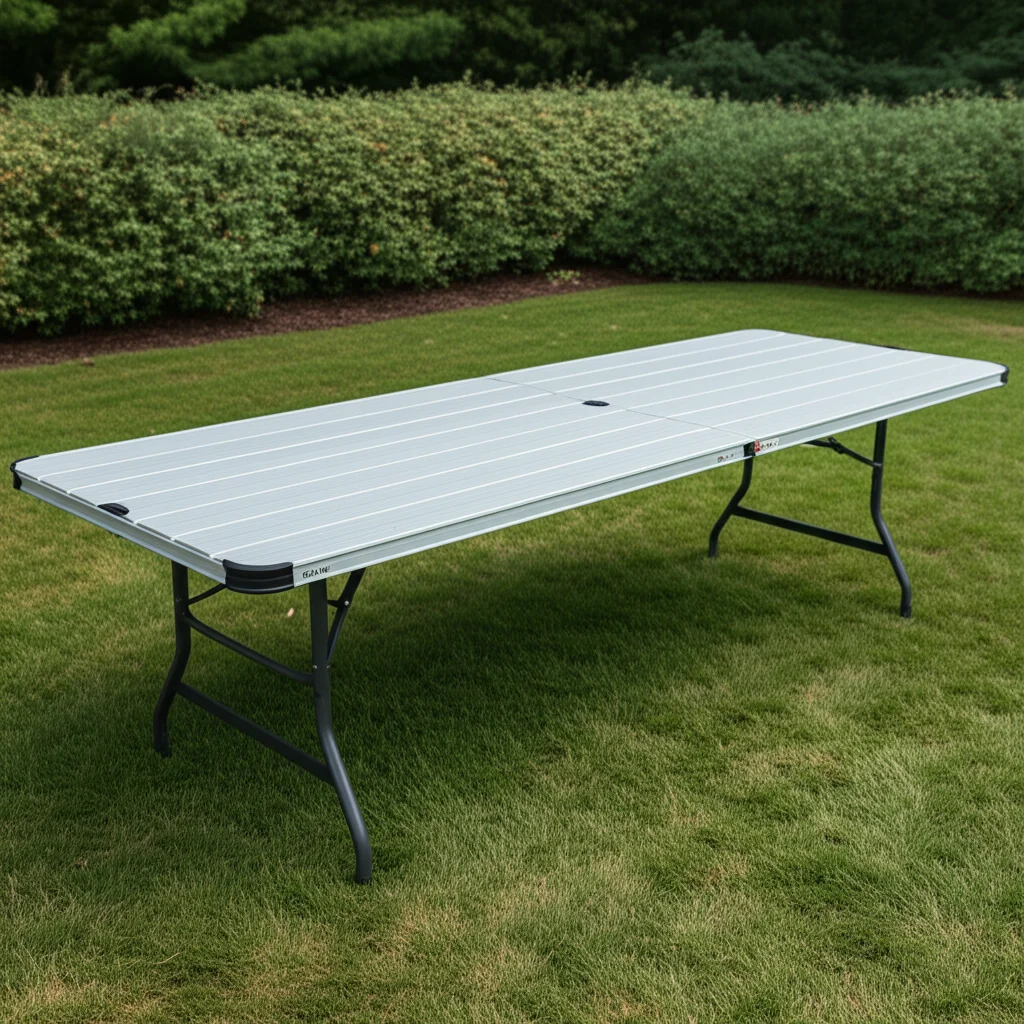· Todd Martin · Home Essentials · 16 min read
Where Are Ruler Firearms Manufactured

Understanding Where Ruler Firearms are Manufactured
Have you ever wondered about the origins of your firearms, especially those referred to as “ruler firearms”? It’s a question many people ask. The term “ruler firearms” often comes from a common misspelling of “Ruger firearms.” Sturm, Ruger & Co., Inc., commonly known as Ruger, is a prominent American firearm manufacturer. This company makes a wide range of popular rifles, pistols, and revolvers.
This article will explain where Ruger firearms are manufactured. We will look at their primary production sites in the United States. You will learn about their dedication to quality and their manufacturing processes. We will explore the journey of these firearms from concept to the hands of consumers. This guide will help clarify the production locations of these well-known American firearms.
Takeaway
- “Ruler firearms” likely refers to “Ruger firearms,” a leading American manufacturer.
- Ruger primarily manufactures its firearms in American facilities located in Newport, New Hampshire, and Mayodan, North Carolina.
- Their manufacturing process emphasizes precision engineering, advanced machinery, and strict quality control.
- Ruger focuses on American-sourced components and robust distribution networks.
- The company adheres to all federal and state regulations in its production and sales.
Ruler firearms, almost certainly referring to Ruger firearms, are primarily manufactured in the United States. Sturm, Ruger & Co., Inc. operates significant production facilities in Newport, New Hampshire, and Mayodan, North Carolina. These locations serve as the main hubs for designing, producing, and assembling Ruger’s diverse range of popular firearms for the civilian market.
The Legacy of Ruger: American Firearm Manufacturing
The story of Ruger firearms begins in America. Sturm, Ruger & Co., Inc. was founded in 1949 by William B. Ruger and Alexander McCormick Sturm. Their goal was to build high-quality, reliable firearms. They started their operations in a small machine shop in Southport, Connecticut.
From these humble beginnings, Ruger grew into a major name. They quickly gained a reputation for innovative designs. Their firearms became known for their durability and performance. This commitment to quality has been a cornerstone of their manufacturing philosophy.
The company’s growth mirrored the increasing demand for American-made firearms. Ruger focused on efficient production methods. They always aimed to offer good value to their customers. This approach helped them secure a strong position in the firearm market.
Today, Ruger remains a symbol of American manufacturing. They continue to produce firearms that people trust for various uses. These uses include sport, hunting, and self-defense. The company’s history shows a deep commitment to its American roots.
Key Manufacturing Hubs: Where Ruger Firearms Come to Life
Ruger operates major manufacturing facilities in two key locations in the United States. These sites are the heart of their firearm production. Each location plays a vital role in bringing Ruger’s products to market. These facilities are designed for efficiency and precision.
Newport, New Hampshire Facility
The Newport, New Hampshire, facility is one of Ruger’s primary manufacturing sites. This plant is responsible for producing a wide range of firearms. These include popular rifles like the Ruger 10/22. It also makes various pistols and revolvers.
The Newport plant uses advanced machinery and technology. Skilled workers operate these machines to ensure high-quality output. The facility includes various departments, from machining to final assembly. It is a large, integrated operation dedicated to firearm production.
The Newport site is not just a factory. It is a center for innovation and craftsmanship. Many of Ruger’s iconic designs are manufactured here. This facility upholds the company’s standards for precision and reliability.
Mayodan, North Carolina Facility
Ruger’s second major manufacturing hub is located in Mayodan, North Carolina. This facility expanded Ruger’s production capabilities significantly. It helps meet the strong demand for their products. The Mayodan plant also produces a variety of firearms.
The North Carolina plant benefits from modern infrastructure. It employs a dedicated workforce. This facility ensures that Ruger can maintain high production volumes. It also helps manage their diverse product lines.
Both facilities operate under strict quality control measures. They follow the same high standards set by the company. This ensures consistency across all Ruger products. The Mayodan plant reinforces Ruger’s commitment to American manufacturing.
These two manufacturing hubs are essential to Ruger’s success. They allow the company to produce a vast array of firearms. They also ensure the firearms meet strict quality benchmarks. This dual-location strategy supports efficient production and distribution.
The Manufacturing Process: From Raw Material to Finished Firearm
The production of Ruger firearms involves a detailed and precise manufacturing process. It starts with raw materials and transforms them into finished, functional firearms. This journey requires careful planning and skilled execution at every step. Each stage is critical for safety and performance.
Material Sourcing and Preparation
The process begins with sourcing high-quality raw materials. These materials include various types of steel, aluminum, and polymers. Ruger ensures these materials meet strict specifications. They are typically sourced from American suppliers. This helps maintain quality control and supports domestic industries.
Once materials arrive, they undergo initial preparation. This might involve cutting, shaping, or heat treating. These steps prepare the materials for precise machining. Proper material preparation is key to the strength and durability of the final product.
Precision Machining and Component Creation
This is a critical stage where raw materials become firearm components. Advanced CNC (Computer Numerical Control) machines play a huge role here. These machines precisely cut and shape metal parts. They create components like receivers, barrels, and slides with extreme accuracy.
Ruger also uses processes like investment casting. This method allows for complex shapes with high precision. It reduces the need for extensive machining. Each component must meet tight tolerances for proper fit and function. The company invests heavily in modern machinery for this stage.
Assembly and Hand Fitting
After individual components are made, they move to the assembly lines. Skilled technicians carefully assemble the firearms. Many parts are hand-fitted to ensure smooth operation. This attention to detail is a hallmark of quality firearm manufacturing.
During assembly, various sub-assemblies are put together. These might include trigger mechanisms, bolt assemblies, and magazine wells. Each step is checked for correct alignment and function. This systematic approach ensures every firearm is built to specification.
For popular models like the Ruger 10/22, the assembly process is streamlined. However, individual inspection points are still crucial. Understanding how to maintain these firearms, such as making them easier to clean, is also important for owners. You can learn more about this by visiting how to make ruler 10/22 easier to clean.
Finishing and Surface Treatment
Once assembled, firearms undergo finishing processes. This includes applying protective coatings. These coatings enhance durability and appearance. They also protect against corrosion and wear. Common finishes include bluing, anodizing, and various polymer coatings.
The finishing stage also involves final polishing and deburring. This ensures that all surfaces are smooth and safe to handle. Attention to these details contributes to the overall quality and aesthetic of the firearm. A well-finished firearm shows attention to craftsmanship.
Quality Control and Innovation: Ensuring Reliability
Ruger places a high priority on quality control throughout its manufacturing process. This commitment ensures that every firearm leaving their factories is reliable and safe. They use a multi-layered approach to maintain their high standards. Innovation also plays a key role in their continuous improvement.
Rigorous Testing Procedures
Every firearm manufactured by Ruger undergoes extensive testing. This includes both component testing and live-fire testing. Components are checked for dimensions and material integrity. This happens even before assembly begins. These initial checks prevent defective parts from entering the production line.
After assembly, each firearm is live-fire tested. This means firing actual rounds through the gun. This confirms proper function, cycling, and accuracy. Any firearm that fails these tests is either corrected or removed from production. This step is crucial for user safety and performance.
Quality control inspectors perform visual inspections at various stages. They look for any imperfections, scratches, or manufacturing defects. They also check for proper fit and finish. This meticulous inspection process ensures only top-quality products reach consumers.
Advanced Manufacturing Technologies
Ruger invests in state-of-the-art manufacturing technologies. This includes advanced robotics and automation. These technologies enhance precision and consistency. They also reduce human error in repetitive tasks. Automated systems perform complex machining operations with extreme accuracy.
The use of computer-aided design (CAD) and computer-aided manufacturing (CAM) is standard. These tools allow for precise design and efficient production. They help in prototyping new models quickly. This technology also ensures exact replication of parts.
Continuous Improvement and Research & Development
Ruger is committed to continuous improvement. They regularly review their manufacturing processes. They look for ways to make them more efficient and effective. Feedback from customers and employees drives these improvements. This iterative process helps them refine their products.
The company also maintains a strong research and development (R&D) department. This team focuses on designing new firearms and improving existing ones. They explore new materials, technologies, and features. This dedication to R&D keeps Ruger at the forefront of firearm innovation. They strive to meet changing market demands and user needs. Their focus on innovation helps them create new product lines that appeal to a broad audience.
Supply Chain and Component Sourcing: The Network Behind Production
The manufacturing of Ruger firearms relies on a robust and well-managed supply chain. This chain ensures that all necessary components and materials are available when needed. A strong supply chain is essential for consistent production and quality control. Ruger emphasizes sourcing from within the United States.
Domestic Sourcing Strategy
Ruger has a strong commitment to American manufacturing. This extends to their supply chain. They prioritize sourcing components and raw materials from American suppliers. This strategy supports other domestic businesses. It also helps reduce lead times and shipping costs.
Sourcing locally gives Ruger better control over material quality. They can work closely with their suppliers. This helps ensure that all incoming materials meet their high standards. It also minimizes reliance on international supply lines, which can be unstable. This commitment to domestic sourcing is a hallmark of their operation.
Supplier Relationships and Quality Assurance
Building strong relationships with suppliers is vital. Ruger works with a network of trusted partners. These partners provide everything from specialized steel to polymer blends. They communicate closely to ensure timely deliveries and consistent quality. This collaboration helps maintain efficient production schedules.
Suppliers often undergo rigorous qualification processes. Ruger verifies their ability to meet specific technical requirements. They also check for compliance with quality standards. This due diligence ensures that every component contributes positively to the final product. Regular audits may be conducted to maintain these standards.
Inventory Management and Logistics
Efficient inventory management is critical for a smooth manufacturing flow. Ruger uses advanced systems to track materials and components. This helps avoid shortages and overstocking. Accurate inventory levels ensure that production lines keep moving.
Logistics involves moving materials from suppliers to the factories. It also covers moving finished products to distributors. Ruger’s logistics team plans these movements carefully. They ensure materials arrive on time and products ship efficiently. This meticulous planning supports high production volumes and timely delivery.
A well-managed supply chain is the backbone of Ruger’s manufacturing success. It allows them to produce high-quality firearms consistently. It also strengthens their commitment to supporting American industries. This integrated approach ensures reliability from raw material to final product.
Distribution and Global Reach: Getting Firearms to Consumers
Once Ruger firearms are manufactured and pass all quality checks, they enter the distribution phase. This is where products move from the factory floor to retailers and, eventually, to consumers. Ruger has an extensive distribution network, primarily focused on the United States market. Their reach extends to legal international markets where applicable.
Domestic Distribution Network
Ruger primarily sells its firearms through a network of wholesale distributors in the United States. These distributors then supply the firearms to licensed dealers. This system ensures that products reach gun stores across the country efficiently. It also complies with all federal and state firearm sales regulations.
The distribution process is highly regulated. Firearms must be transferred only through Federal Firearm Licensed (FFL) dealers. This ensures legal ownership and proper background checks. Ruger works closely with its distributors to ensure compliance at every step. This adherence to regulations is paramount for responsible sales.
Their distribution strategy allows Ruger to reach a vast customer base. From large sporting goods stores to small, local gun shops, their products are widely available. This broad presence makes Ruger a household name among firearm enthusiasts. They strive to keep their most popular models well-stocked.
International Sales and Export Regulations
While the U.S. market is Ruger’s main focus, they also engage in international sales. Exporting firearms involves navigating complex international laws and regulations. Each country has its own import rules and restrictions. Ruger complies with all U.S. export laws, including those enforced by the Department of State and Commerce.
International sales typically involve working with authorized foreign distributors. These partners understand their local regulations. They help ensure that Ruger firearms are legally imported and sold. This careful approach maintains Ruger’s reputation as a responsible manufacturer.
Export markets allow Ruger to expand its brand presence globally. They cater to international demand for American-made firearms. However, the complexity of international regulations means domestic sales remain the dominant focus. Maintaining strong relationships with global partners is key for any international ventures.
Customer Support and Service
Ruger provides excellent customer support for its products. This includes warranty services, parts availability, and technical assistance. They understand that customer satisfaction extends beyond the point of sale. Their service department handles inquiries and provides solutions.
This commitment to post-sales support builds customer loyalty. It also helps Ruger gather valuable feedback. This feedback can inform future product improvements. A strong distribution network combined with reliable customer service strengthens Ruger’s market position. It ensures a positive experience for firearm owners.
Regulatory Environment and Compliance: Adhering to Strict Laws
The manufacturing and sale of firearms operate within a heavily regulated environment. For companies like Ruger, strict adherence to federal, state, and local laws is not just good practice; it is mandatory. This compliance impacts every stage of their operations, from design to distribution.
Federal Regulations and the ATF
The primary federal agency overseeing firearms is the Bureau of Alcohol, Tobacco, Firearms and Explosives (ATF). The ATF enforces laws related to the manufacture, import, and sale of firearms. Ruger must obtain and maintain specific licenses from the ATF to operate. These licenses cover production and dealing.
Federal laws dictate many aspects of firearm design and features. For example, certain firearm types are restricted or require special taxation. Ruger ensures its products comply with these design specifications. They also maintain detailed records of every firearm produced. This includes serial numbers and sales transactions. These records are critical for traceability and law enforcement.
Compliance with the National Firearms Act (NFA) is also important for certain products. The NFA governs machine guns, short-barreled rifles, and other specialized firearms. While Ruger primarily produces firearms for the general civilian market, they understand these laws. They ensure all their products meet legal definitions and restrictions for their intended market.
State and Local Laws
In addition to federal regulations, firearm manufacturers must navigate a patchwork of state and local laws. These laws vary significantly across the United States. Some states have stricter rules on firearm features, magazine capacity, or types of firearms allowed. Ruger adapts its product offerings to comply with these diverse requirements.
For example, a specific model of a Ruger firearm might be legal in one state but not another. This requires careful management of inventory and distribution. Ruger works closely with its distributors to ensure only compliant products are shipped to specific jurisdictions. This careful attention prevents legal issues for both the company and the end consumer.
Local ordinances can also add another layer of complexity. While usually less impactful on large-scale manufacturing, local regulations might affect retail sales or possession. Ruger’s broader compliance strategy considers these localized rules. They prioritize ensuring their products can be legally sold and owned wherever they are distributed.
Safety Standards and Industry Best Practices
Beyond legal compliance, Ruger also adheres to high safety standards and industry best practices. This includes implementing robust safety features in their firearm designs. They conduct thorough testing to ensure the safety and reliability of their products. This commitment goes beyond minimum legal requirements.
Ruger is also part of industry associations that promote responsible firearm ownership and safety. They contribute to educational initiatives and safe handling guidelines. This proactive approach helps foster a culture of safety among firearm owners. It reinforces their role as a responsible industry leader. Their dedication to safety is paramount for every product they make.
FAQ Section
Is “ruler firearms” a real term for guns?
No, “ruler firearms” is not a standard term in the firearm industry. It is almost certainly a common misspelling or misunderstanding of “Ruger firearms.” Ruger is a well-known American company that manufactures a variety of popular rifles, pistols, and revolvers. We are discussing Ruger firearms in this article.
Where are Ruger firearms primarily manufactured?
Ruger firearms are primarily manufactured in the United States. The company operates its main production facilities in Newport, New Hampshire, and Mayodan, North Carolina. These American-based factories are responsible for designing, producing, and assembling the wide range of Ruger products.
Does Ruger outsource its manufacturing to other countries?
Ruger maintains a strong commitment to American manufacturing. The company primarily produces its firearms in its U.S. facilities. They also prioritize sourcing components and raw materials from American suppliers. While some parts might be sourced globally for very specific reasons, their core manufacturing remains domestic.
What types of firearms does Ruger manufacture?
Ruger manufactures a diverse range of firearms. Their product line includes various rifles, such as the popular Ruger 10/22 rimfire rifle. They also produce a wide selection of pistols, including semi-automatic and revolver models. Additionally, Ruger makes different types of shotguns for hunting and sport.
How does Ruger ensure the quality of its firearms?
Ruger ensures quality through a multi-stage process. This includes strict material sourcing and precision machining with advanced CNC technology. They also use careful hand-fitting during assembly. Every firearm undergoes rigorous testing, including live-fire tests and thorough visual inspections, before it leaves the factory.
Are Ruger firearms subject to strict regulations?
Yes, Ruger firearms are subject to stringent regulations. As a manufacturer, Ruger must comply with all federal laws enforced by the ATF. They also adhere to various state and local firearm laws. This includes licensing, product specifications, record-keeping, and sales compliance.
Conclusion
We have explored the true origins behind the query “Where are ruler firearms manufactured.” It is clear that this term typically refers to Ruger firearms, a distinguished American company. Sturm, Ruger & Co., Inc. proudly manufactures its extensive line of high-quality firearms in the United States. Their primary facilities are in Newport, New Hampshire, and Mayodan, North Carolina. These locations embody Ruger’s commitment to American craftsmanship and innovation.
The manufacturing process involves advanced precision engineering, meticulous quality control, and a robust, domestically focused supply chain. From raw materials to the final product, every step is carefully managed to ensure reliability and performance. Ruger’s dedication to strict regulatory compliance and strong customer support further solidifies its position as a leader in the firearm industry. For anyone interested in where their firearms come from, understanding Ruger’s manufacturing process provides valuable insight into the origins of these trusted American-made products. Explore the quality and precision of Ruger firearms today.





